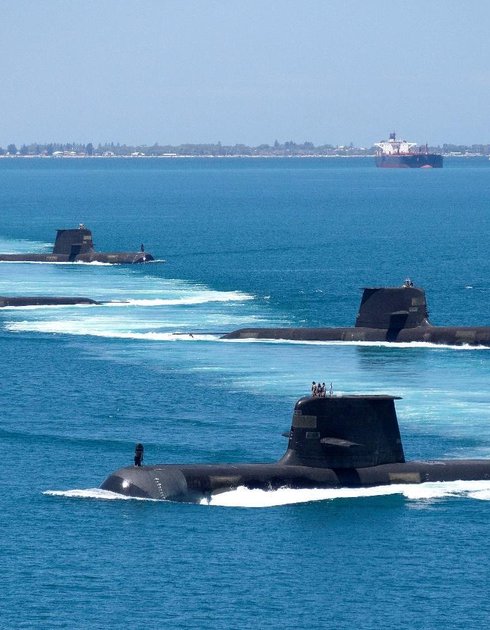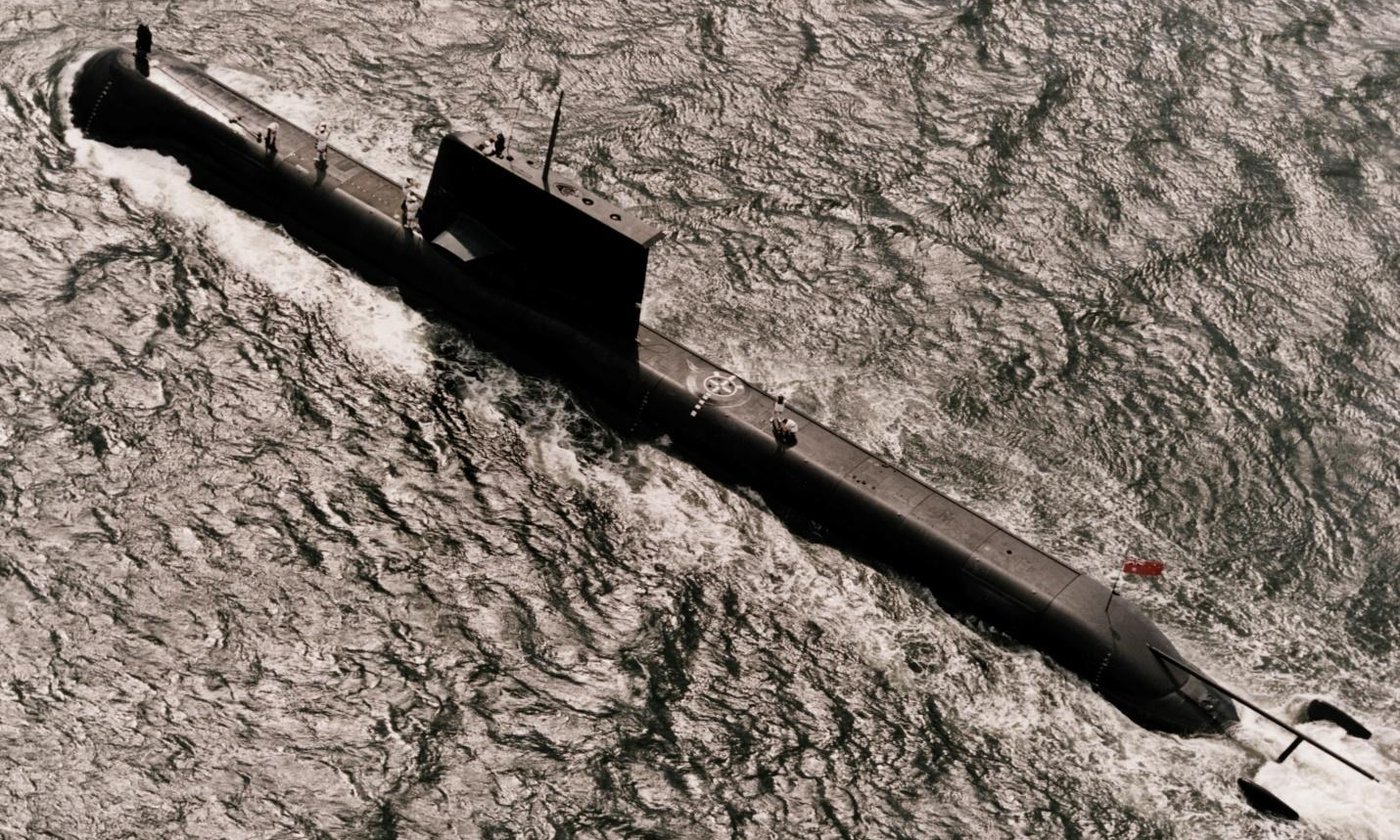Collins Class
Development and Specifications

Image provided by Royal Australian Navy
Submarines of this Class
Pennant: SSG 73
Commissioned: July 1996
Pennant: SSG 76
Commissioned: February 2001
Pennant: SSG 74
Commissioned: January 1998
Pennant: SSG 78
Commissioned: March 2003
Pennant: SSG 77
Commissioned: February 2001
Pennant: SSG 75
Commissioned: July 1999

Image provided by Royal Australian Navy
HMAS Collins – Royal Australian Navy
Project Development
The Collins Class project was established by the Royal Australian Navy (RAN) in 1982.
Replacing the RAN's Oberon Class, the new design was required to meet the unique needs of the Navy, which were dictated by, among other things, Australia's geographic location.
The new submarines would be required to:
- travel great distances;
- operate in varying environments;
- have state-of the-art weapons systems; and
- perform traditional submarine functions using the most advanced technology available.
The submarines would also be required to protect Australia through their very existence, acting as a deterrent to enemy forces.
It was decided that large conventional submarines would be acquired. The Collins Class submarines are the second largest non-nuclear-powered submarines in the world.
In 1987, the newly formed Australian Submarine Corporation (now ASC Pty Ltd), began the task of designing and building the most sophisticated conventional submarine in the world.
Construction of the first Collins Class submarine, HMAS Collins, was begun in 1990 and delivered it to the RAN in 1996. The sixth and final boat, HMAS Rankin, was delivered to the RAN in 2003.
Submarine Construction
The construction of the Collins Class submarines was an unprecedented feat of engineering, design and logistics in Australia.
The project required specification, integration and installation of equipment and material from over 150 major contractors and hundreds of smaller suppliers. Most of the submarine modules were constructed off-site and then shipped to us for integration.
Key parameters for equipment included electrical power, cooling, noise, shock resistance, weight and electromagnetic characteristics, all under rigorous configuration management as data was distributed between the various suppliers during the design phase.
Submarine Outfitting Statistics
Piping: 23,500 metres
Major cable lengths: 7,000
Cable connections: 200,000
Cable: 75,000
Batteries: 400 tonnes
A completed submarine is a system of systems. A Collins Class submarine contains 108 integrated systems which are linked structurally, mechanically, electrically, hydraulically, pneumatically and electronically.
All of these systems need power and cooling, and many need to communicate with each other in order to achieve full operational capability.
Technical Documentation
Over 33,000 drawings and 5,000 work orders were produced before construction of the Collins Class submarines could begin. Once work started, each submarine took 2.5 million hours to assemble.
There are an estimated 350,000 individual technical documents associated with the Collins Class submarines, including:
Design drawings: 70,727
Parts lists: 46,717
Specifications: 42,865
Cable: 75,000
Batteries: 400 tonnes
Collins Class at Sea – Practice Makes Perfect
When HMAS Rankin, Collins-class submarine defeated USN ships in the military exercise “Silent Fury” it demonstrated its crew’s expertise in tactics, the boats stealth and how swiftly being the hunted can shift to becoming the hunter.